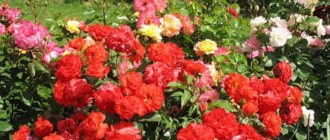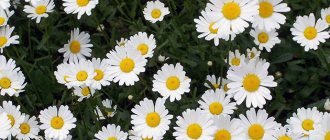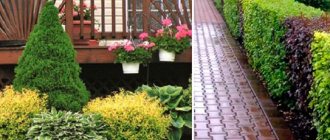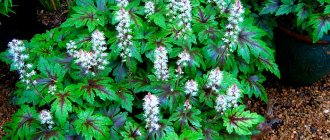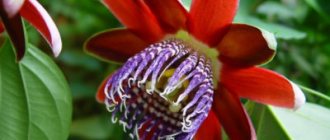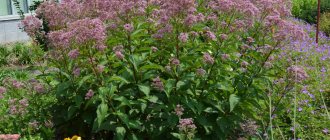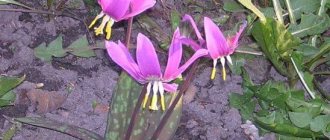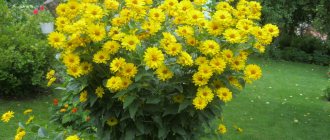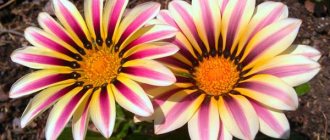We suggest studying the question of how to properly grow a Christmas tree on your site.
Coniferous trees are very useful for humans; they provide not only aesthetic beauty, but also clean air around. Many people plant Christmas trees in the private sector, in their dachas. But they often encounter the fact that seedlings dry out and disappear. Growing a Christmas tree in your own area is relatively easy if you follow some recommendations when planting in open ground. We’ll talk about this and the nuances of germinating seedlings at home in detail in this article.
Does planting time play a role or when to replant a seedling to grow a Christmas tree on your site?
The Christmas tree is not very picky about the seasons for planting, if you take good care of it. Each period has its pros, cons and risks. But there are still the most favorable ranges to grow a Christmas tree at home, these are:
- from the end of March to the beginning of May (before the start of the growing season);
- from mid-September until the onset of cold weather.
Important point: You need to focus on the weather conditions in your region. The ground should already have thawed from frost, but should still be sufficiently saturated with moisture. Ideally, planting should coincide with the rainy season.
For young plants, the most favorable period is spring.
Planting in spring:
- There is enough heat and time for the root system to grow well in the planting hole;
- The seedling will “tell you” if it is missing something;
- Young branches have time to appear;
- But early heat in spring can dry out the plant.
Planting in autumn:
- A sufficient amount of moisture and a less scorching sun have a beneficial effect on the development of the seedling;
- The soil has time to completely settle;
- But an early rainy season (especially in abundance), without heat, can cause the roots of a young plant to freeze;
- And too small seedlings need winter insulation.
Summer planting:
- There is enough time for the seedling to take root and start growing;
- But a lack of moisture and an abundance of scorching sun can destroy the plant. Therefore, in the summer, you need to ensure regular watering of the soil as much as possible, and if necessary, shade the area.
Planting in winter:
- Suitable for mature seedlings with a height of 1.5 m;
- Snow retains heat in the ground and, when thawed, properly nourishes the soil (so spring watering is no longer so important);
- But a sharp and severe frost will destroy the young spruce.
It is better to plant adult seedlings in winter, when there is no severe frost.
Preparing the soil to grow a Christmas tree at home
Spruce, like Scots pine, is included in the list of exceptions - it is a eurytopic plant. Those. takes root and survives on almost any soil. But for fast and full growth, loose, slightly acidic soil is needed (in the range of 5-6.5 pH). Loam (a mixture of 70% clay and 30% sand) or sandy loam (90% sand and 10% clay) is suitable.
The ideal soil for planting spruce is 2 parts turf soil, 2 parts forest broom (or leaf soil), 1 part peat and sand each. The result is a nutritious mixture that allows air and moisture to pass through well.
Instead of spruce needles, you can use sawdust, wood chips or crushed bark. They will create looseness in the soil and will additionally nourish it. Or use Nitroammofoska - a complex mineral fertilizer, 100-150 g is enough.
Lowland peat is suitable for a Christmas tree.
Basic soil requirements to grow a Christmas tree on your home plot:
- The flowerbed should not be near places where water lies or accumulates close to the surface, exclude lowlands;
- If you have an area with nearby groundwater, then it is worth building an artificial hill;
- To increase the acidity of the soil, peat or iron sulfate and leaf compost are used. Subsequently, the spruce itself oxidizes the soil, scattering needles;
- For a young seedling, the absence of weeds is important.
Choosing a place
Planting any plant begins with choosing a place, because the successful growth of the tree, and therefore the result of your work, depends on how well it is chosen.
Please note that the spruce root has the ability to quickly grow not in depth, but in breadth. This means that vegetable crops and fruit trees cannot be its neighbors. It is better if you plant it away from the rest of the green inhabitants of the garden. But the proximity to a birch tree, on the contrary, will be beneficial for spruce. It will provide the tree with the shade it needs.
There should be no underground water nearby, the tree does not like it, in any case, when planting, drainage is poured into the bottom of the hole. Choose “light” soils; the root system will be more comfortable in them. Let it be sandy loam, loam, fertile soil.
Due to the characteristics of the root system, windblows pose a serious danger to spruce.
Rules for growing a Christmas tree at home: a review of mistakes that lead to the death of the plant
- Spruce must be replanted with the root ball intact. Shaking the root off the ground is especially dangerous. You can soak the shoot in water for several hours so that the soil itself moves away and frees the roots. But soil brought from the forest or nursery helps the plant to take root faster.
Important: Do not touch the clump of seedlings in the container - if it breaks, small roots can be damaged, which will lead to the death of the plant. Also, do not remove the burlap if the plant was in it. Only remove wire, rope or plastic.
Don't break the lump!
- Do not deepen the root collar to successfully grow a spruce! This is where the brown color transitions to the greenish tint of the trunk, which should not be underground! When it is buried, the roots of the plant do not receive proper oxygen supply, the seedling grows poorly and is highly susceptible to diseases. In the future, it may even die. If you dug a shoot in the forest, remember the height of its location above the ground. We look at the photo below and plant according to this scheme.
- If you purchased a Christmas tree in a container, the top layer of the earthen ball will indicate the planting level. In this case, you can even plant the seedling 1-2 cm higher, in case the soil shrinks.
Important : If you do deepen the root collar, do not rush to pull out the plant, especially if it has taken root. It is enough to dig up the ground around a little and free up the area.
Neck recess diagram
- The hole should be 1.5-2 times larger than the size of the root/coma. On average, you need a hole up to 60-70 cm deep and wide. A small planting hole is another mistake made by inexperienced gardeners who want to grow a Christmas tree on their site. Because of this, the plant develops poorly.
Description
As we have already noted, its second name is European spruce. It grows everywhere, but mainly it can be found in the European part of Russia, mainly in the north.
Spruce
With proper care, its size can be quite impressive, because it grows quite quickly, its height is up to 55 meters, the trunk can be up to a meter wide. The evergreen coniferous tree grows slender, with a dense, pyramidal crown and shiny needles. Pollen appears in May-June, and seeds ripen in early autumn. The color of the bark changes with age from brown to brown.
Representatives of different forms have slight differences, mainly related to branching.
General recommendations on how to grow a Christmas tree at home: choosing a location and stages of planting a seedling
The root system of spruce is located on the surface, so the planting site should not be close to buildings - at least at a distance of 1.5-2 m, tall spruce trees - from 5 m or outside the yard. There should also be at least 2-2.5 m between seedlings. Spruce is not afraid of shade, but will grow slowly in it. Therefore, to grow a Christmas tree at home, choose a place with good lighting. But the seedling should not be constantly exposed to scorching rays, especially at noon. Partial shade is great.
Maintain distance between neighbors!
Stages of planting or transplanting a seedling:
- Pour 1-2 buckets of water into the hole to soften the soil.
- Place 15-20 cm of broken brick, crushed stone or gravel drainage at the bottom. The heavier the soil, the higher the drainage layer. Sprinkle some substrate on top.
- Place the root ball and cover with soil mixture. To avoid deepening the root collar, place a board at the level of the hole as a guide. If the seedling is placed deep, lift it a little and add more earth to the bottom. Do not compact the soil!
- But be sure to water the seedling with 10-20 liters of water to eliminate voids in the ground. To prevent water from spreading, make an earthen dump around the spruce or place a tire, slightly deeper into the ground. You need to add water gradually so that it has time to be absorbed.
- Afterwards, lightly compact the soil around the trunk and mulch to a depth of 5 cm. It is advisable to use parts of coniferous trees - pieces of bark, branches, cones, pine needles. This will keep moisture and heat inside the planting hole. The mulch should not touch the trunk! Next spring, the mulch is loosened with the soil to a depth of 5-6 cm.
Important: If the soil has settled, add more prepared soil mixture and generously water the plant.
A stick level will help you avoid deepening the root collar.
Advice : If you have heavy soil and the soil has been completely replaced, then it is better to plant the Christmas tree in a rigid package. So that there is no contact with the main ground. This will help retain nutrients inside the planting hole longer.
Planting a Christmas tree in hard packaging
Spruce varieties
Spruce trees prefer cool climates.
It is desirable that the soil is rocky or sandy. Unpretentiousness is expressed in winter hardiness and drought resistance.
| View | Description | Variety | Peculiarities |
| Ordinary | Up to 50 m. The pyramid-shaped crown is decorated with a pointed tip. The oblong cones and tetrahedral needles are colored deep green. | Akrokona | The sizes are compact, plentiful. Fruiting is early. |
| Frohburg | Medium-sized straight trunks, flowing lush “paws”. | ||
| Ohlendorffy | Wide crown, golden needles, dense branches. | ||
| Serbian | Flattened needles, decorated with silvery dashes. Highly decorative, unpretentious to the soil. | Peve Tejin | Smooth surface, thick crown. |
| Canadian | Height from 25 to 30 m. Dense bluish-green crown, branches pointing down. The cones are small in size. When ripe they turn brown. | Alberta Globe | Graceful crown. Its surface is provided with tuberosity. |
| Sanders Blue | When there is insufficient lighting, the needles become looser. | ||
| Konika | It was obtained as a result of Canadian selection. | ||
| Weeping | Reaches 50 m. The bluish needles have a sharp shape. The cones are characterized by a burgundy color and small size. | Snake | Gradual growth of skeletal branches. |
| Bush Leys | High decorativeness is due to the variety and richness of shades. Among them are bluish-green, blue, and silver. | ||
| Blue | The branches are directed horizontally. Frost-resistant, resistant to gas contamination. The needles have a blue tint, bare shoots are painted bright brown. | Herman Nau | Compact variety, the central stem is not pronounced. Bluish needles. |
| The Blues | Medium height, long needles decorated with blue growths. | ||
| Hoopsie | Lush crown, height – no more than 12 m. | ||
| Black | Up to 30 m. Bluish-green needles are characterized by density. The branches are pubescent. Unpretentious, winter-hardy. | Aurea | Slow growth, drooping branches. |
| Nana | Dense crown, annual growth - up to 5 cm. Contrasting color, short needles. | ||
| Siberian | Narrow cone-shaped crown, the length of glossy needles is no more than 3 cm. | Glauka | Slender central stem, linear needle-shaped needles. |
| Eastern | Does not exceed 60 m. The crown is dense. The branches located at the base are raised. The rich green needles are tough. | Aureospicata | The height varies from 10 to 15 m. The growths are greenish-yellow. |
| Nutans | Branches grow unevenly. The needle needles have a glossy tint. Ripe cones are brown in color. | ||
| Mariorica | No more than 30 m. Needles decorated with silver inclusions. | Machala | Width - up to 1 m, needles are silver-bluish in color. |
| Ayanskaya | Winter-hardy, shade-tolerant, unpretentious. | Nana Calus | A low plant with a rounded crown. |
How to grow a Christmas tree at home: caring for a young tree
The Christmas tree is unpretentious in care. The only thing she doesn’t like is drought and the scorching sun. Therefore, for the first year, or even 2-3 years (depending on the age of the seedling and its condition), it is necessary to ensure regular and generous watering.
- Water the spruce once a week with 10-12 liters of water. Focus on weather conditions and soil moisture. In summer, make sure the soil always remains moderately moist.
Checking the condition of the soil: Squeeze a handful of soil from under the tree into a fist and unclench your hand. If the soil crumbles, it needs watering; if water oozes out, it needs overwatering. With sufficient moisture, the earthen lump should keep its shape.
- During the first week, shade the plant from the sun with a homemade canopy, especially if the area is sunny. It is advisable to avoid bright and scorching sun altogether for the first year.
- During hot periods, water by sprinkling.
- Never pour water under the barrel! We water evenly in the area of the earthen dump at a distance of 20-30 cm from the tree.
Algorithm
- It is better to use rain or settled water, at least for the first time.
- Regularly remove weeds and lightly loosen the soil by 5-6 cm.
- Be sure to tie small seedlings to a support.
- The tree does not need fertilizing and fertilizers, especially if Nitroammofoska was used when planting. If desired, when young shoots are forming, use fertilizers for conifers (follow the instructions).
- If yellow needles appear or the seedling looks weak, it is worth spraying with Epin (1 ampoule per 5 liters of water) or Zircon (1 ml per 10 liters). Be sure to water the plant thoroughly first by sprinkling the trunk. Repeat the procedure every 10 days until the Christmas tree recovers.
- It is not necessary to trim your spruce unless you are trying to create a hedge or create an unusual tree shape. But, in order not to grow a Christmas tree with two tops, form the crown correctly and, if necessary, remove the second upper shoot.
Important: During the first year, it is worth covering small seedlings with spruce branches or non-woven material to protect them from frost. But do not cover the spruce directly, but build a frame from the boards so as not to damage the branches. Often young seedlings burn from the spring sun (in February-March), when the ground has not yet completely thawed. In this case, shade the plant.
How to shade and cover
How to grow a Christmas tree from pine cones and seeds?
To grow a Christmas tree from seeds, you need to take cones from the forest or in the park in late November - early December, when the ground is frozen. They should not be open; it is better to collect them under old 10-year-old plants.
- To open the buds and collect the seeds, place the harvested crop in a container on a radiator for several days. When the cone opens, carefully shake out the seeds.
- Soak them in a weak solution of potassium permanganate for a day, then dry.
- Next, the seeds need to achieve the winter effect, this process is called stratification. There are several ways to do this. The most popular method is to place the seeds in the freezer for a few days or a month (depending on your patience), after placing them in a container with fresh snow.
- Or plant the seeds in peat or sand and place them on the refrigerator door for 1 month, or better yet, until spring.
Sowing
- Before planting in the soil, the seeds should be removed from the refrigerator and soaked in warm water for several days.
- It is better to plant seeds in forest soil where spruce grew, or use a mixture of peat, sand and garden soil. Only the soil must be watered with potassium permanganate for disinfection.
- For planting, use a not very deep pot with drainage at the bottom. Pour soil onto the drainage and sow the seeds. They need to be deepened no more than 0.5-1 cm.
- Watering should be done with a sprayer so as not to provoke rotting and blackleg disease. And don’t get carried away with watering - the soil should be moderately moist, but not with excess water.
- Cover the pot with cling film and place it on the sunny side, on the windowsill. Do not use artificial lighting.
- It may take several months for the sprouts to sprout. As soon as the first shoots appear, the pot should be removed from direct sunlight.
- Stick to a temperature of up to 15 °C. Therefore, send the sprouts to a closed balcony or loggia.
- You can transplant them into a separate pot when the sprout is 2 cm high. The next transplant into a spacious container is a year later, in winter.
Algorithm
Young seedlings can be planted in open ground only after 3 years, having reached 0.5 meters. But it is worth considering that the tree grows more slowly from seeds. Also, before planting in open ground, hardening is required for several months in the fresh air. Take the seedling outside, gradually increasing the time it stays.
How to grow a Christmas tree from a twig using cuttings?
To grow a Christmas tree from a twig, it is worth picking planting material in April, August or February. Choose the top part of a spruce tree that is less than 10 years old.
- The cuttings should be at least 10 cm in length, and preferably 20-25 cm. They should be torn off by hand so that at the end a “five” is formed with last year’s growth. This way, the resin and nutrients will be better retained in the branch itself, and the sprout will not rot.
- After this, the bottom of the branches should be cleared of needles by 5-6 cm, cutting off the side branches, and placed in water for a day.
It is important to keep the heel on the branch
- Prepare a mini-greenhouse from a 5-liter bottle, cut it in half. We will subsequently cover the planted cuttings with the upper part. You should also drill drainage holes around the bottom of the bottle.
- To plant in the ground, take peat and coconut substrate in equal portions. Place a drainage layer of 3 cm of crushed stone or gravel. Then pour about 10-15 cm of soil onto the drainage layer and tamp it down.
- Before planting, the lower part of the cuttings should be well treated with Kornevin. It is best to rub the stimulant into the branches with your hands. To enhance nutrient supply, scratch the “bald” part of the cuttings a little.
- The cuttings need to be planted at an angle of 30-45°, 3-4 cm deep. Make a hole with a peg or pencil. Do not force the cutting into the ground! After planting, compact the soil. Sprinkle about 1 cm of river sand on top to prevent the cuttings from rotting. Pour warm water, cover and place in a dark place.
Important: To prevent the climate inside the greenhouse from being too wet, make holes in the lid or open it periodically for ventilation.
Scheme for germination of cuttings
Winter or spring cuttings of spruce will give good results, summer cuttings grow more slowly. The rooting process will take 65-80 days. After 90-150 days, the roots will reach a length of about 20 cm and will be ready for transplanting into open soil.
Reproduction of spruce
New trees can be obtained using seeds and cuttings. The latter are popular among amateurs. For the rootstock, you can use another coniferous tree. The main condition is its high frost resistance.
Rooting should be done in early spring. The gardener must be in time before the buds swell. Stems with smaller branches are used as cuttings. The shoot should have a length of 6-10 cm. After it is cut, it must be treated with a growth stimulator. The optimal landing angle is 30 degrees. The soil mixture is prepared from sand and peat. Instead of the last ingredient, you can use fine perlite. The soil is covered with drainage and turf soil. The thickness of the first layer should be at least 5 cm, the second - about 10 cm.
To grow a spruce using the generative (seed) method, it will require a lot of expense and time. In this case, seed material that has retained germination is used. The seeds are extracted from ripe cones. They are pre-dried. To carry out stratification, peat or dry sand is used. The next step is freezing. The seeds are kept in the refrigerator for 1-1.5 months. Sowing is carried out in late February-early March. Using this method, the gardener will receive plants that will be characterized by slow growth, low resistance to strong gusts of wind, scorching sun and excessive humidity.
How to grow a Christmas tree dug up in the forest: tips
- You need to dig up a young seedling in spring or autumn. It is better to replant mature trees with an ice ball in winter.
- Choose cloudy and damp weather - it will be easier to dig. Young shoots can even be pulled out by the roots.
- You need to dig at a distance of 50-60 cm from the trunk so as not to damage important roots.
- Be sure to save the earthen lump.
- And remember the location of the branches, which are from the north and which are from the south.
- The root ball should be wrapped in burlap or polyethylene, tied well with rope.
- It wouldn’t hurt to take extra forest land for planting.
Transport the spruce from the forest while preserving the earthen ball as much as possible.
Growing a Christmas tree at home is actually not very difficult. Plus, it's a great pastime that you and your family can enjoy for many seasons to come. The time and effort required will certainly be rewarded with the freshest trees.
Staged planting
Planting spruce can be broken down into steps:
- Dig a hole 60 cm deep and the same diameter.
- Build drainage from sand along with crushed stone at the bottom of the hole
- Prepare a soil mixture from the following components: sand, soil, peat and humus, you can add up to 150 g of nitroammophoska.
- Cover the drainage with the mixture and pour in a bucket of water.
- Plant the root together with a lump of earth in the hole.
- Fill the rest of the hole with the mixture.
- To ensure that the plant maintains one optimal temperature, mulch with peat.

